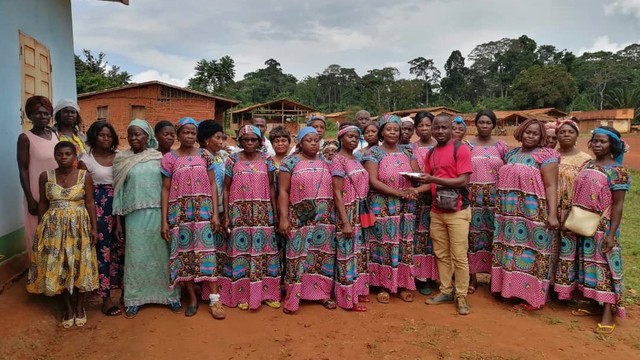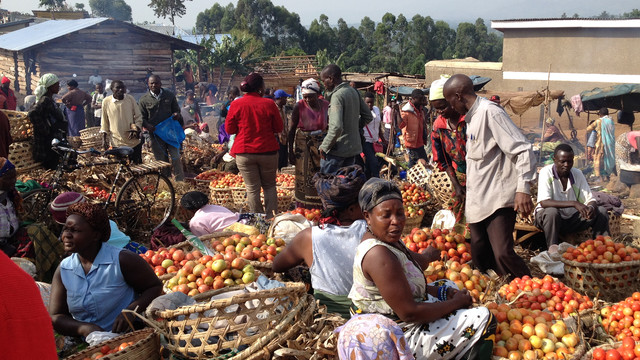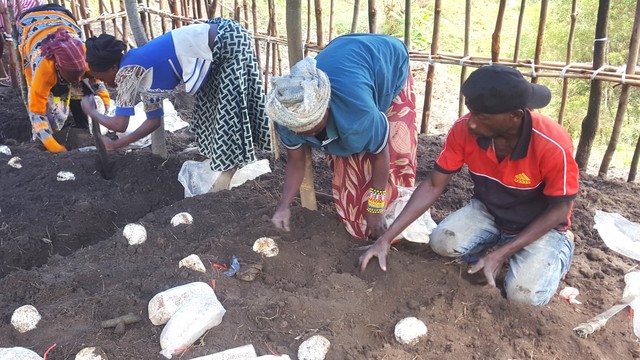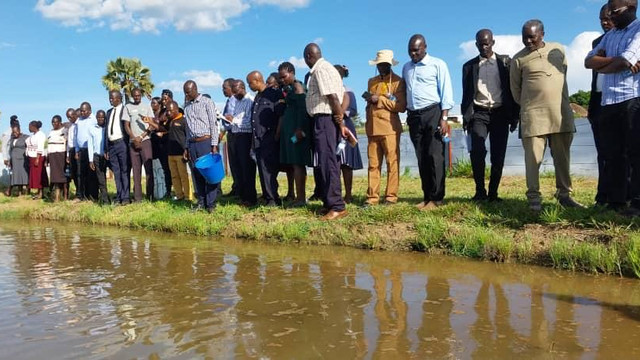Maps reveal what motivates people to take resources from flagship national park
A project that maps people's unauthorised use of resources in a national park provides important insights into the links between poverty and conservation.
Mpugu Parish borders Bwindi Impenetrable National Park (top right). Photo: Copyright Andrew Kirkby
Rangers in Uganda's Bwindi Impenetrable National Park find two men in the park with machetes and timber poles. They have taken the wood illegally to either sell it or use it themselves for building or fuel. Walking through the park’s mountainous terrain is tough work. How far have these men come? Where and how do they live? What motivated them to make the effort?
Bwindi is in south-west Uganda and is home to 400 mountain gorillas — about half of the world’s population. Each day tourists pay hundreds of US dollars to visit the gorillas, some of which is meant to benefit local communities. Have the men the rangers caught benefited from this tourism income? If they had benefited more would they still have taken wood from the park?
Through mapping, we try to answer complex questions like these as part of the Conservation Through Poverty Alleviation project, which aims to ensure that conservation has a more positive impact on the poorest households near the park. Bwindi used to be forest reserve, and local people could access the resources they needed. But when it became a national park in 1991 and restricted access to those resources, conflicts between local people and park authorities began.
As a result, the Ugandan government and nongovernmental organizations adopted various "integrated conservation and development" strategies to help local communities benefit from resources the park generates – on the assumption that persistent poverty in the communities surrounding the park drives unauthorised resource use and poses a threat to conservation.
But in 2010, an assessment of these projects showed they haven’t been very effective in alleviating poverty. To help identify better solutions, our mapping work aims to understand what factors motivate people to enter the park, and whether poverty is one of these.
What maps reveal
When the rangers find someone carrying out illegal activities, they use GPS-trackers to record the precise location. In recent years, I’ve been working with the Institute of Tropical Forest Conservation (ITFC) and IIED to collect data on where and how the poachers live. With this information and the GPS coordinates, I can create maps that help make sense of ways that people’s poverty can affect the park’s ability to conserve wildlife — and vice versa.
One surprise was how far people were willing to walk to find resources. The terrain is exceptionally steep and difficult to traverse. A journey of just one kilometre (as the crow flies) can involve a climb of 400 metres, followed by a descent of 300 metres through thick vegetation that a person can only penetrate by hacking at it with a machete. Yet in some cases, people crossed the entire park or walked all the way around it.
It's easy to assume that poverty is what impels people to make these journeys, but the wealth of people the rangers catch varies greatly. Indeed, as part of this project, the Uganda Poverty and Conservation Learning Group found that poorer villagers generally took minor forest products, such as firewood, that are critical to their wellbeing. Meanwhile, wealthier (but still incredibly poor by international standards) members of the communities were more likely to be opportunistic bush meat hunters —who pose a greater threat to conservation.
Our maps also show how people’s locations can compound their poverty to affect livelihoods and wellbeing in different ways. Some people live right on edge of the forest, which makes their farms more susceptible to raiding by wild animals. Others live far from a trading centre, road or health centre, so face other challenges.
Maps help make sense of seemingly disparate data. They show that bush meat hunters the rangers caught tended to live close to tourist areas. Although the maps can’t tell us why, they raise interesting questions. Are hunters who live near resorts more likely to be caught because rangers patrol these areas more than others? Or do local people mostly hunt near the tourist sites? If so, is this because communities there are wealthier, and so can better sustain a market in bush meat?
Such insights help us to challenge common assumptions, such as that which says poverty is the main reason people use the park’s resources illegally.
Our maps will appear in both academic journal articles and in resource book that IIED is developing for conservation and development workers in Uganda. We will also provide the park’s management authorities and Uganda’s Poverty and Conservation Learning Group with copies of the maps. My hope is that they will provide strong visual support to the project’s goal of boosting local knowledge and improving policies to ensure that conservation and development can work hand-in-hand, rather than against each other.
Andrew Kirkby is a volunteer working with IIED’s Natural Resources Group.
The project is funded by the UK Government through the Darwin Initiative and UK aid. However the views expressed do not necessarily reflect the views of the UK Government.



